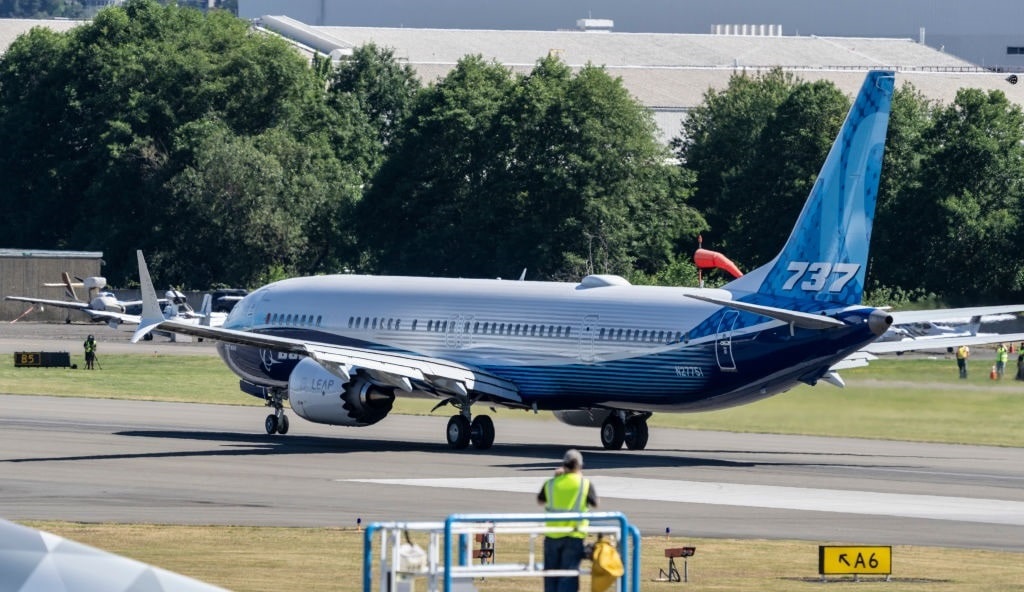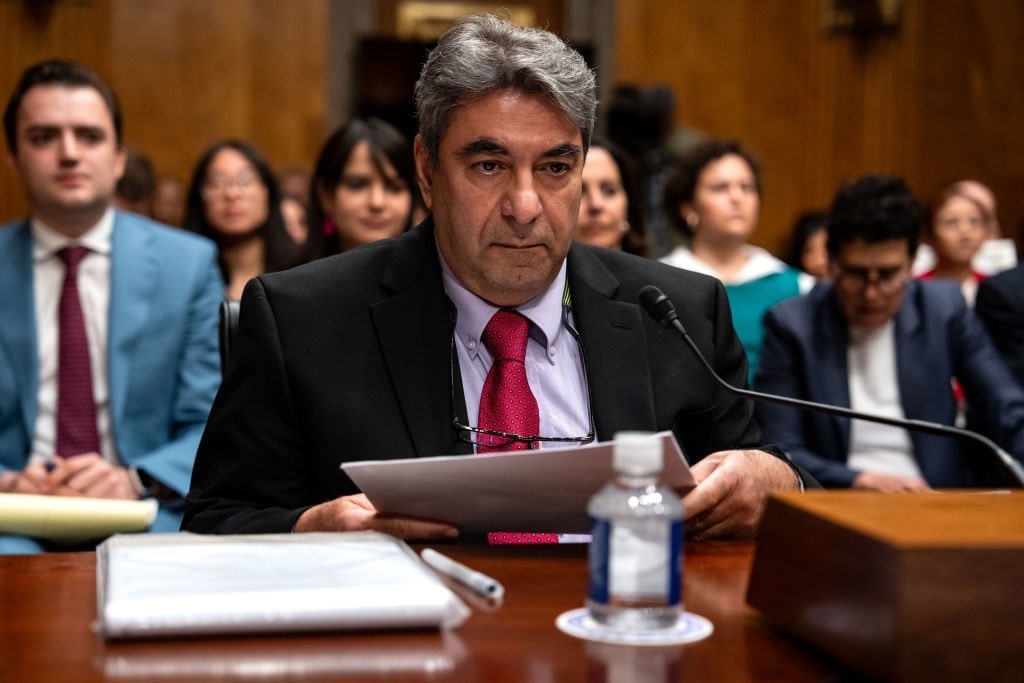Two Senate committee hearings were held yesterday, April 17, to discuss Boeing’s continued worrisome troubles. Among those testifying was Boeing whistleblower Sam Salehpour, an engineer for the company who brought several concerns to the committee, including allegations that “they are putting out defective airplanes.”
Boeing Whistleblower Spills the Beans
In his opening statement, Salehpour said: “I have serious concerns about the safety of the 787 and 777 aircraft and I’m willing to take on professional risk to talk about them.” He testified that when he tried to bring up problems, his superiors shut him down. “I was ignored. I was told not to create delays. I was told, frankly, to shut up.”
 The airline builder has suffered from several serious malfunctions with its jets recently, and the Boeing Whistleblower said safety measures are not being followed. Salehpour claimed to have found gaps between parts that exceeded the specifications “and were not properly addressed 98.7% of the time.” To fix this, he testified, “I literally saw people jumping on pieces of the airplane to get them to align. I call it the Tarzan effect,” he said.
The airline builder has suffered from several serious malfunctions with its jets recently, and the Boeing Whistleblower said safety measures are not being followed. Salehpour claimed to have found gaps between parts that exceeded the specifications “and were not properly addressed 98.7% of the time.” To fix this, he testified, “I literally saw people jumping on pieces of the airplane to get them to align. I call it the Tarzan effect,” he said.
Boeing’s standards allow for up to 5/100th of an inch gap, but Mr. Salehpour said they usually ended up much more than that. Although there weren’t any representatives at either of the meetings Wednesday, at a briefing earlier this week, a company spokesperson said the 5/100th of an inch gap is only the width of two pieces of paper or of a human hair strand and that even when the gaps were wider, there were no signs of fatigue or other problems with the jets, even after years of service. The Boeing whistleblower disagreed, saying: “When operating at 35,000 feet, the size of a human hair can be a matter of life and death.”
Other Boeing employees admit to being afraid to step forward with any concerns or report safety alarms for fear of retaliation, as well. “When I bring something to my boss, he prevents me from even documenting or sending information,” Salehpour explained. “When a quality manager says don’t send to a subject matter to an expert … that’s concerning.” He added that he was “berated” and “chewed out” by his boss. “It really scares me, believe me. But I am at peace … I feel like by coming forward, I will be saving a lot of lives. Whatever happens, happens.”
John Barnett, a former quality control manager, and later a Boeing whistleblower, filed a complaint in 2017, accusing the company of retaliating against him for raising safety concerns regarding the company’s commercial airplanes. He was found dead from an apparent self-inflicted gunshot wound in his car in March.
There have been a lot of concerning mishaps with Boeing planes over the past decade, including:
2015: The windshield on a Boeing 777 cracked, forcing an emergency landing at Los Angeles International Airport after it had just taken off.
2015: Three pilots of a British Airways flight got sick after debris blocked airflow to the cockpit on a Boeing 777 plane.

(Photo by Stephen Brashear/Getty Images)
2018: A piece of the left engine on a Boeing 737-700 crashed into the window, shattering it and causing the plane to depressurize. A female passenger was partially sucked out of the plane and killed.
2018: A United Boeing 777 lost the cowling – the engine’s removable covering – to its right engine, forcing an emergency landing.
2018/2019: In October 2018, 189 passengers and crew on a new Lion Air Boeing 737 Max 8 from Jakarta to Sumatra died after the plane crashed into the Java Sea only 13 minutes after takeoff. Then, in March 2019, another new 737 Max 8 crashed in Ethiopia, killing all 157 passengers on board. A 2020 House investigative report that blamed both Boeing and the FAA, said it was caused by “repeated and serious failures.” It called the crashes “a horrific culmination of a series of faulty technical assumptions by Boeing’s engineers, a lack of transparency on the part of Boeing’s management, and grossly insufficient oversight by the FAA.” It claimed the airplane manufacture for cutting cost and refusing to slow production of 737 aircraft.
2021: A Rossiya Airlines Boeing 777-300ER cargo plane had to make an emergency landing in Moscow due to a faulty engine control sensor.
2022: An engine cover detached on an Alaska Airline flight.
More recently, a panel broke off a new jet in mid-flight, improperly drilled holes were found on window frames on some MAX planes that hadn’t been delivered yet, missing parts in the rudder control systems, and, of course, the plugs missing from the doors. In January alone this year, there were several incidents including:
- An emergency landing at Portland International Airport after part of a Boeing 737 MAX-9 fuselage ripped off, which caused several items, including phones, to be sucked out when it was depressurized.
- A window in a Boeing 737-800 operated by Japan’s All Nippon Airways cockpit cracked, forcing it to cancel takeoff.
- A possible oxygen leak on a Boeing 737 forced Secretary of State Antony Blinken to take a different plane.
- Atlas Air flight 95 had flames coming out of a Boeing 747-8, according to social media images, and was listed as engine failure.
- During takeoff, a Boeing 757 operated by Delta Airlines lost a wheel.
Boeing failed 33 of 89 Federal Aviation Administration audits earlier this year that found “multiple instances” where the company and its supplier, Spirit AeroSystems, didn’t comply with quality-control requirements.
During Wednesday’s pair of hearings, witness Ed Person, a former Boeing manager and the executive director of the Foundation for Aviation Safety, said the company has not provided adequate paperwork to the National Transportation Safety board investigators looking into the incident where a door plug blew out of a Boeing 737 MAX and called it a “criminal cover-up.” He added: “Records do exist documenting in detail the hectic work done on the Alaska Airlines airplane and Boeing’s corporate leaders know it too, because they fought to withhold these same damning records after the two Max crashes.” Boeing has said that it has searched for the records but believes the employees did not document the work.
The door plug incident didn’t just affect the passengers on the plane or Boeing’s reputation, it also reportedly cost United Airlines $200 million after the Boeing 737 MAX was grounded for three weeks. As the airline manufacture continues to come under scrutiny and have other malfunctions with its planes, business for both Boeing and the airlines suffer, not to mention the loss of trust from potential passengers. Boeing said it has encouraged its employees to come forward with any safety and production concerns.




